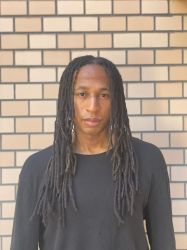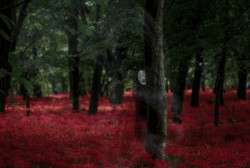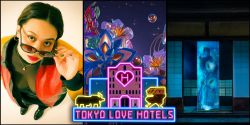
Originally published on metropolis.co.jp on February 2010

Photo by Kevin Mcgue
On this crisp winter evening, 150 people who were lucky enough to secure advance tickets politely queued up at Waseda University’s Hoshien campus, quietly filed into the red-brick Scott Hall, and sat in near silence as they waited for Joanna Newsom. The most prominent leader of the psych-folk movement, the 27-year-old has won a legion of dedicated fans in Japan. When she entered from a side door, the audience let out a collective gasp, due in large part to her stunning red silk Christopher Kane scalloped dress.
Newsom sat at her towering pedal harp and began performing the music that has made her famous: melodic, polyrhythmic plucking paired with lilting vocals. Her impressive technical control and the atmosphere of the venue itself—a chapel complete with pipe organ—left the audience in reverential silence. But Newsom’s casual patter between songs gradually put her fans at ease.
After two songs, she was joined by percussionist Neal Morgan and multi-instrumentalist Ryan Francesconi, who displayed mastery over guitar, banjo, mandola and flute, often switching instruments mid-song. “We are going to play a lot of new songs tonight,” Newsom explained, launching into “Daddy Long Legs,” an optimistic love song. Other than “The Book of Right On” and “Inflammatory Writ,” from her 2004 breakthrough album The Milk-Eyed Mender, all of the songs were taken from the upcoming Have One on Me, to be released on Drag City on February 23 in the US, and P-Vine on March 3 in Japan. Details and samples of the new album, which was recorded in Tokyo throughout 2009, have been kept closely under wraps, but an invite-only listening party for press last week revealed it to be Newsom’s magnum opus, spread over three CDs and clocking in at just over three hours.
Continuing a trend started with her 2006 album Ys, most of the songs on Have One on Me are long pieces that slowly build in both theme and arrangement over an average of ten minutes. For this performance, Newsom and collaborators played abbreviated arrangements, presumably to be able to try out as much as possible of the new material, some of which was being performed live for the first time. Newsom played nearly half of the songs on piano, and the change of instruments seemed to underscore a new direction in her songwriting. Although it seems wrong to apply the label “conventional” to such an individualistic artist, the new songs have a clearer rhythmic groove than her previous work, at times sounding jazzy and bluesy. While previous lyrics were often symbolic, bordering on surrealistic, the new songs fall a little more comfortably into the tradition of the narrative love ballad. Newsom has rejected the most common terms critics apply to her vocal style—“elfin” and “child-like”—and her singing on the new material reveals a sultriness and broadened tonal range that defies those terms.
After an encore, Newsom departed, and many from the crowd timidly approached the stage, taking photos with their mobile phones of the silent harp, seemingly in an attempt to better understand the creative process of this singular artist.







